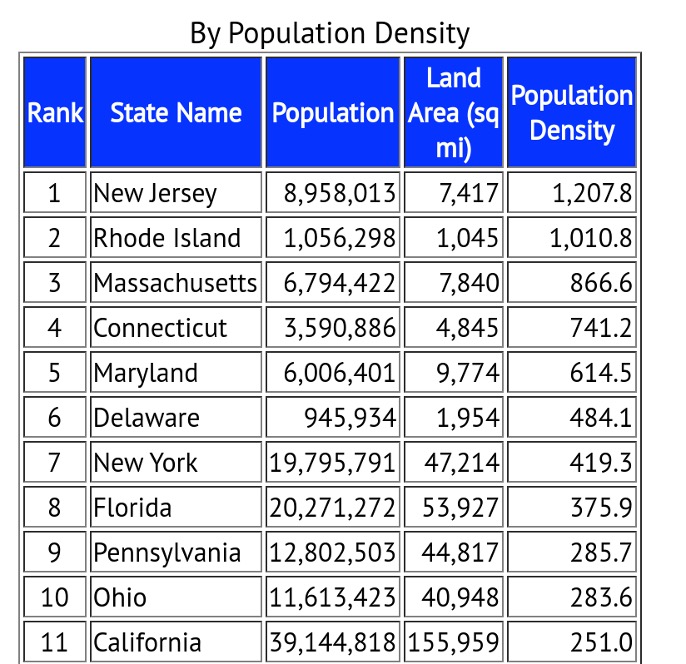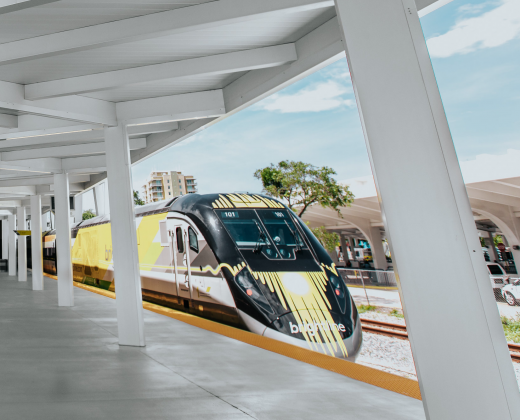Henry Flagler arguably brought real estate development to South and Central Florida in the late 19th and early 20th century when he extended rail service from St. Augustine south to West Palm Beach and eventually to Miami and then Key West. When he arrived in Florida in 1885 he began construction of the 504-room Ponce De Leon Hotel in St. Augustine. Realizing the need for a sound transportation system to support his hotel ventures, Flagler purchased short line railroads in what would later become known as the Florida East Coast Railway. He quickly understood that rail spurred development and it allowed people and goods to travel from the Northeast to the Sunshine State. His hotel was an immediate success because of the rail connection he built.
After nearly half a century of interrupted passenger rail service, the choo-choo is making a comeback in Florida. The prospect for transit oriented development (TOD) has never been better for Florida and intercity and commuter rail service will likely have a dramatic impact on Florida’s future development much as new rail service did over a century ago in our state.

With pancake flat topography, a population of nearly 22 million people and a relatively high population density of 376 people per square mile, Florida is well suited for intercity passenger rail to succeed in our state. The 4 largest MSAs in Florida have populations of well over 1 million people and are far enough (but not too far) that driving isn’t always a viable and efficient option. In addition, we already have large pockets of population density living along Florida’s east coast, which also happen to live within close proximity of the Florida East Coast Railway (FEC) corridor in South and Central Florida and to a lesser extent North Florida. If driving isn’t an option due to time and distance, our only other available option is air travel. Intercity passenger rail service can be competitive with commercial air travel if total air travel times are less than 3-4 hours. (Total air travel time includes: driving to the airport and arriving at least an hour before takeoff to give enough time to go through TSA, walk to the gate, taxiing to and from the gate, flight time, deplaning, walking to the airport exit and grabbing an Uber or taxi.)


Brightline & Intercity Commuter Rail Expansion in Florida
Brightline is a private company that has been operating intercity commuter rail service on the FEC rail line between Miami, Fort Lauderdale and West Palm Beach since January 2018. All Aboard Florida, which operates Brightline, is owned by an affiliate of Fortress Investment Group LLC, a global investment management firm which is publicly traded. As of November 2019, it is the only privately owned and operated intercity passenger railroad in the United States and currently has an annual ridership 885,000 (2019).
Other Routes & Destinations
Orlando
Brightline is aggressively looking to expand its current service to other cities. Expansion of service to Orlando International Airport is expected by early 2022. The Orlando station is located just south of the airport and has been substantially completed already, though unused for more than a year and now houses Brightline Trains staffers. Brightline Trains is currently building new tracks that will eventually connect the Orlando Airport Station to the FEC tracks on Florida’s East Coast. The 35-mile stretch of new rail corridor from Orlando International Airport to the Florida East Coast Railway near Cocoa in Brevard County will cost $4 billion and is being privately financed. The Brightline route will parallel S.R. 528 east to a new bridge over the St. Johns River, cross Interstate 95, go under S.R. 528 twice and then connect with Florida East Coast Railway at U.S. Highway 1. The section from the airport to near Cocoa requires 30 new bridges; the stretch from Cocoa to West Palm Beach will need 28 new bridges.
Pre-Covid-19, Brightlin predicted that within several years the annual passenger count would grow to more than 6 million passengers, with about half of those going to or coming from Orlando’s airport. The base, one-way fare for the three-hour run from Miami to Orlando, will be priced at between $60 and $100. Brightline is aiming for the sweet spot of distances too far for driving and too near for flying.

Aventura, Boca Raton & Port Miami
In October 2019, Miami-Dade County Commissioners pledged $76 million to build Aventura station at the Aventura Mall in Aventura, Florida, between Miami and Fort Lauderdale. The Aventura station is expected to be completed in the Fall of 2020.
In December 2019, Boca Raton was officially chosen as an infill station site to be connected to Mizner Park via a pedestrian bridge. Brightline proposed constructing the station and rail infrastructure while the city would cover access and zoning requirements. The Boca Raton station is expected to be completed in late 2020.
In October 2019, Brightline also announced plans to start building a station in PortMiami in 2020.
Commuter Rail: Wynwood, Design District, 79th Street, North Miami and FIU North
In 2020, it was revealed that Brightline Trains was planning a commuter rail service to complement the higher-speed intercity line and is seeking $350 million to build five train platforms between Downtown Miami and Aventura. Trains would run between Miami Central and Aventura with five train platforms in Wynwood, the Design District, 79th Street, North Miami and FIU North.
Future Expansion
Brightline has expressed interest in adding a station on Florida’s Treasure Coast and another on the Space Coast between West Palm Beach and Orlando. In August 2018, the company asked cities in the area to submit proposals for station locations. Fort Pierce, which last had passenger train service on July 31, 1968, has expressed interest. The city of Stuart has also indicated that it will be negotiating for a potential station.
Brightline has indicated that Stuart is the most likely location for a Treasure Coast station, and that Cocoa would make the most sense for a Space Coast station, both because of proximity to Port Canaveral’s cruise lines as well as for positioning for future expansion to Jacksonville.
Tampa
Brightline has been in negotiations with the Florida Department of Transportation (FDOT) to lease right-of-way along the Interstate 4 corridor. Brightline was the only bidder to submit a proposal to construct an intercity rail line along Interstate 4, which has been designated for federally funded high-speed rail. This would be utilized for an extension of the line from Orlando International Airport to Downtown Tampa. Potential stops along this route are the SunRail Meadow Woods station, Walt Disney World, and Lakeland.
Jacksonville
Rumors have also swirled about an eventual extension to Jacksonville, Florida. The existing tracks are currently used for freight and the existing right of way is already under ownership of Fortress Investment Group. An extension to Jacksonville would not be a hard lift for Brightline.
The Future of Air Travel in the Era of Covid-19
Few industries have been hit harder than the aviation industry. According to The Economist by April 2020 global passenger numbers had fallen by 94% year on year, to level last seen in 1978. The industry has lost well over $250bn in revenue in the last 6 months.
In May 2020 the International Air Transport Association (IATA) estimated that passenger numbers would return to pre-pandemic levels by 2023; seems fair to say that without a vaccine this prediction looks wildly optimistic. More recently, IATA has also predicted that only 30 of the world’s 700 or so airlines would survive the crisis without government help. Carriers are already starting to fall like dominoes. Flybe, Europe’s largest regional airline, Virgin Australia and LATAM, Latin America’s largest carrier, all filed for bankruptcy in the last several months. Looks like this may just be the beginning of airline failures.
The End of Low-Cost Flights
With low cost carries going out of business and less competition, we will likely see consolidation in the airline industry. For obvious reasons this does not bode well for travelers and we will likely see rising ticket prices. As airlines look to cut costs and streamline operations we will likely see less direct flights as well, which in-turn, will make air travel a longer and more expensive experience. Brightline may stand to benefit from this predicament if they are able to provide more regular service and a less crowded/socially-distanced travel experience then air travel.

Florida Growing
Florida is already one of the fastest growing states in the country. With no state income tax, great weather year round and a relatively low cost of living, Florida, at the very least, will likely continue to grow at a similar pace. If anything, Covid-19 may even accelerate migration from the Northeast, Midwest and Latin America. We’re already seeing strong demand coming from these regions since our crisis began.
Mobility and Development in Florida
According to some of my sources in the 305, Brightline will likely not restart service until the Orlando connection is complete. Covid19 has clearly impacted Brightline service and a large number of Brightline staff were laid off when the company suspended service indefinitely back in March. Even with this huge setback, I’m optimistic about the future of rail travel in Florida. In addition to the significant investments that Brightline has made, there are large contributions being made by cities, counties and even the State.
Brightline will soon connect to the commuter TriRail service in South Florida via Miami Central Station and Brightline will eventually connect with commuter SunRail service in Central Florida. Very quickly, we can see that a Florida rail network is possible if we can fill in a couple of crucial missing links which are now within reach.
Transit Oriented Development opportunities are ripe for the picking in Florida if cities can get their zoning right around train stations. Eliminating parking requirements, encouraging mixed-uses and increasing density around stations will lead to more attractive development opportunities for developers to build, healthy, walkable communities. Covid-19 may have slowed the broader urban renewal development patterns that urbanists have enjoyed during the past 15-20 years, but the mass-exodus to suburbs that we read about in the newspaper headlines will likely be short lived.
In the meantime we will need to learn to adapt and live with the virus until a vaccine is discovered or we reach herd immunity. Life will likely eventually return to some semblance of “normal”, but there will also be permanent changes for the better. In the long term Florida seems well positioned to benefit from the significant rail infrastructure investments that are being made in our state. Transit oriented development opportunities should logically follow.
Giddy-up and hop on the TOD train!

